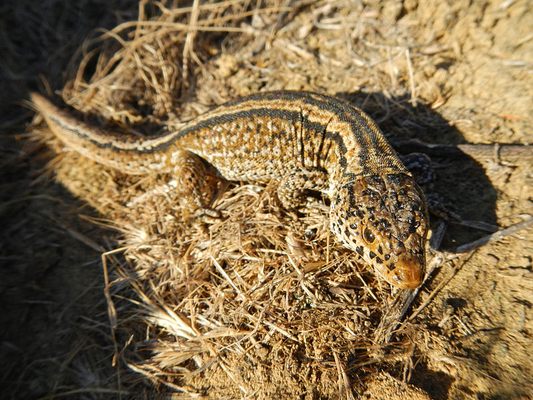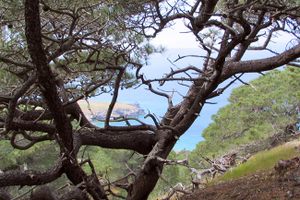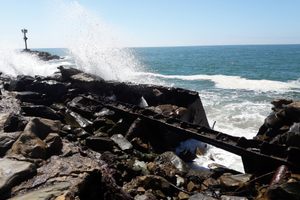About
From 1835 to 1853, a Native American woman, stranded after the evacuation of her people, lived alone on San Nicolas Island. Her story inspired one of the most popular children’s novels ever written.
Named Karana in Scot O’Dell’s Island of the Blue Dolphins, the Lone Woman of San Nicolas Island’s native name is not known. She was part of the Nicoleño tribe that inhabited the island, the most remote of the Channel Islands at 61 miles off the coast of California, for some 10,000 years.
As in the novel, Native Alaskan hunters came to the island to hunt otter. They clashed with the Nicoleños, killing most of them. In 1835, it was arranged that the Nicoleños would be removed to mainland California for their own protection. During the evacuation, a young woman was left behind when a storm forced the departure of the ship.
Some say the young woman was not initially left behind, but jumped off the ship when she realized a young boy, either her son or younger brother, had been left on the island. This is a later addition to the story, attributed by some to Victorian romanticism. In any case, the woman lived alone on the island for the next 18 years, surviving on roots, seal meat, and shellfish meat.
The knowledge of someone having been left behind never lasted through the years. There were stories of a lone woman seen running along the beaches of San Nicolas Island by fishermen. After several failed attempts to find her, a fur trapper named George Nidever and his crew finally tracked her down. They followed footsteps in the sand and found her skinning a seal and wearing a skirt made of green cormorant feathers.
She was reportedly a very happy and pleasant person. Around 50 years old and in good health when she was brought to Santa Barbara Mission, where she lived with Nidever and his wife, she could not communicate directly because no one was left who spoke her language. Her tribe had died out by that point. Sign language allowed her to tell some of her story, and she also delighted in dancing and singing for Santa Barbara residents.
Sadly, she only lasted seven weeks at the mission, the change in diet having resulted in her contracting dysentery. She was christened Juana Maria shortly before she died, and buried in the Nidever family plot at the mission cemetery. Her dress and other belongings she brought with her from the island have been lost.
Archaeologists have since found evidence of two places she probably lived, a cave and the hut made of whale bone she was found near. Boxes of artifacts, including fishing hooks, abalone shell dishes, bird-bone pendants, and harpoon tips have also been found around the island, often near one of her dwelling places.
All archaeological research was halted in 2012 when the Pechanga Band of Luiseno Indians claimed kinship with the Nicoleños, and challenged the rights of archaeologists to conduct research on the island. Today, San Nicolas Island is mostly populated by Navy personnel and used for training and weapons testing. There is a conservation effort underway to protect a species of fox that is native to the Channel Islands. The Lone Woman of San Nicolas Island remains mostly a mystery.
Related Tags
Published
April 20, 2017
Sources
- https://cnic.navy.mil/regions/cnrsw/installations/navbase_ventura_county/about/sni.html
- https://en.wikipedia.org/wiki/Juana_Maria
- https://en.wikipedia.org/wiki/Island_of_the_Blue_Dolphins
- http://www.missionscalifornia.com/stories/lone-woman-san-nicolas-island.html
- https://www.islandconservation.org/san-nicolas-island-california/
- https://en.wikipedia.org/wiki/San_Nicolas_Island
- http://www.latimes.com/local/great-reads/la-me-c1-cave-artifacts-20150305-story.html
- http://wiki.kidzsearch.com/wiki/San_Nicolas_Island
- http://www.avoidingregret.com/2016/06/the-island-of-blue-dolphins-and-juana.html
- https://www.sbnature.org/research/anthro/chumash/lowom.htm





































